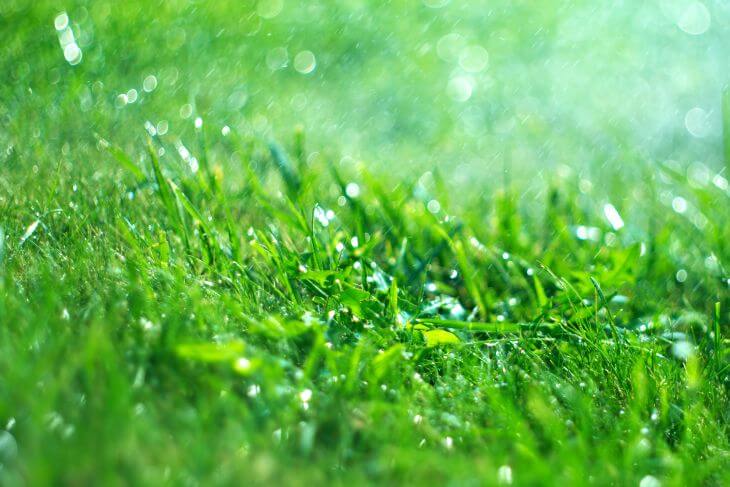Best Time to Fertilize Lawn: Before or After Rain?

Every living thing needs nutrients to thrive and that includes the grass in your lawn. Beyond water and sunshine, grass needs nutrients like potassium, nitrogen and phosphorus to grow strong, healthy roots and dazzling green blades. Fertilizer can provide a combination of nutrients to feed your lawn, but you need to know how and when to add this treatment. Knowing the best time to fertilize lawn – before or after rain, spring or fall, and how often – are all important if you want beautiful, healthy grass.
Fertilizers come in a wide variety of formulas. The type of fertilizer you need depends on the nutrient composition of your soil and the type of grass in your lawn. However, most fertilizers made for feeding lawns will provide the main nutrients needed for healthy grass. Potassium helps your grass stay strong and overcome stress factors like disease and drought. Phosphorus helps grass grow deep, strong roots and nitrogen promotes healthy, green blades. Your fertilizer should have a balance of all three to feed your grass from root to blade.
When and how often you fertilize is a personal choice. Some property owners only fertilize their lawn once a year, while others may fertilize every few months. The basic rule is if you are only fertilizing once a year, you should perform your feeding in early fall for cool-season grasses and in the early summer for warm-season grasses. Otherwise, you can begin in early spring and fertilize every 2-3 months through the late fal. The big question is the best time to fertilize lawn, before or after rain?
Water and Fertilizer – Friends and Foes
Water and fertilizer both help grow a gorgeous, healthy lawn. However, they can be friends and foes, depending on how you combine the two. First of all, fertilizer needs moisture to be effectively absorbed by the grass. Healthy, watered grass can utilize the nutrients in fertilizer best. However, you should never apply fertilizer to wet grass, nor should you fertilize when the grass is too dry or lacking water. You need the right balance of moisture to get the most from your fertilizer, which is why it is important plan around the rain forecast.
Fertilizing and Rain Do’s and Don’ts
When is the best time to fertilize lawn, before or after rain? The simple answer is after, but there are some do’s and don’ts to follow when choosing the best time to fertilize. The reason to wait until after a heavy rain is due to the run-off factor. If you fertilize right before it rains, it is likely that your fertilizer will not be absorbed and wash away. Not only does your grass not receive the benefits, but the fertilizer could also pool in areas where it could cause harm.
When it comes to fertilizing your lawn and rain, there are some things you should do to successfully feed your grass. These include:
- Do check the forecast before fertilizing to ensure that no heavy rain will occur for 2-3 or more days
- Do wait until a day or more after rain to apply fertilizer
- Don’t apply fertilizer to a lawn with wet grass blades
- Don’t apply fertilizer to a lawn with dry soil or during a drought
Since you cannot control when it rains, a little planning is needed to fertilize correctly. If you want to fertilize, but it hasn’t rained in a week or more, you can use your sprinkler system to add the needed moisture. Give your lawn a thorough drenching, then wait a day or more to perform your fertilizing. If you are getting rain every few days, plan a day in between rain days, preferably after the heaviest rain day and before a light rainfall.

What About Sunshine?
While planning around heavy rain is crucial when applying fertilizer, you also want to find a patch of sunshine. Photosynthesis and best absorption of nutrients requires sunshine, so you want to add fertilizer to moist soil with sun in the forecast. The ideal circumstance and best time to fertilize your lawn is a sunny day one or two days after a heavy rainfall has added moisture to the soil with no heavy rain forecasted for a few days. This gives your grass all the elements needed to effectively absorb the nutrients before the next rain.
Fertilizing your lawn can help the grass grow deep roots and produce stunning, green blades for a gorgeous appearance. Knowing the best time to fertilize lawn – before or after rain – can help you get the most from your efforts. Your local landscape supply store can help you find the right fertilizer for your grass type and soil, or you can hire a landscaping professional to perform your lawn fertilization. Either way, make sure you wait until after a rainy day to give your lawn the nutrients it needs to thrive.